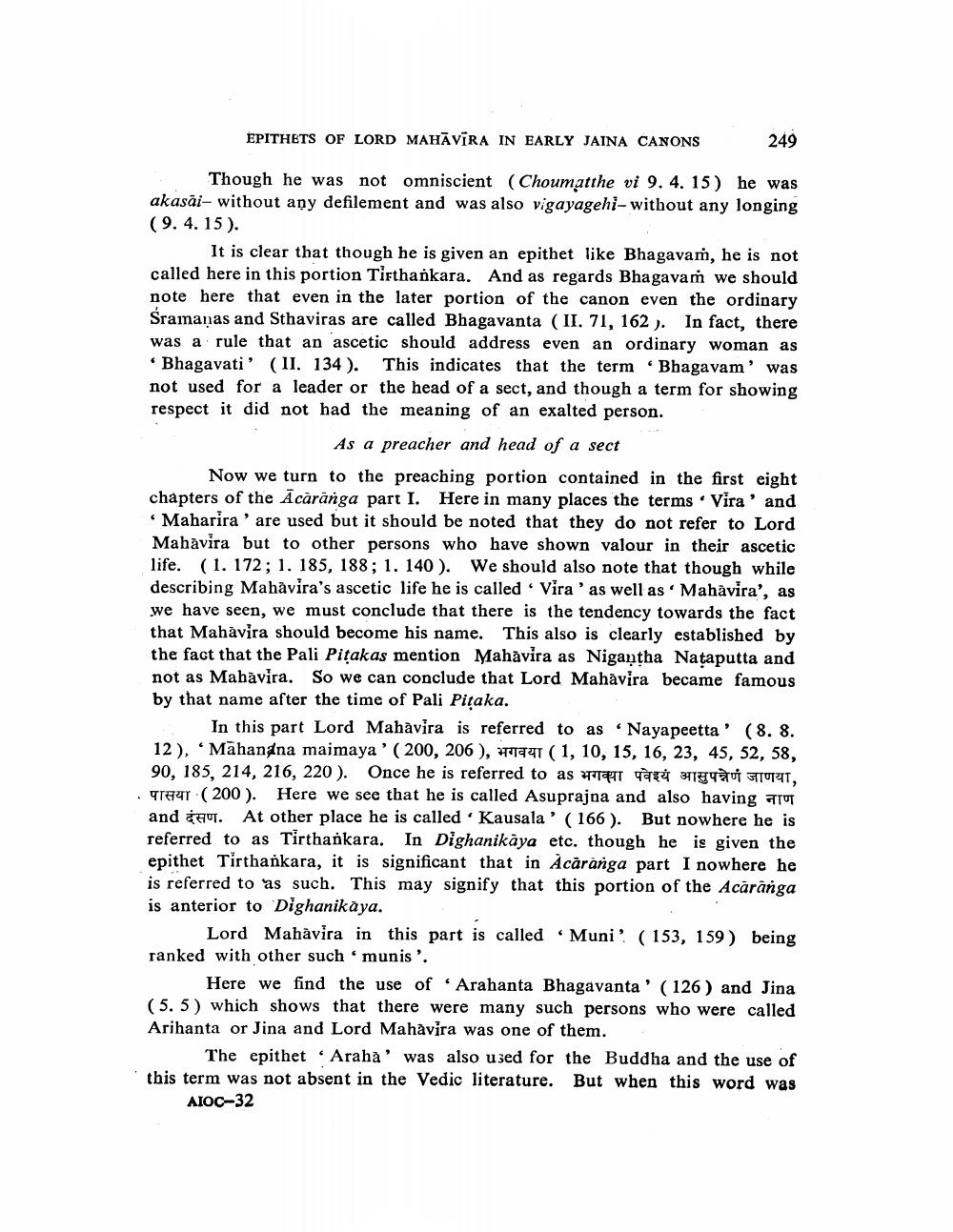Book Title: Epithets Of Lord Mahavira In Early Jaina Canons Author(s): Dalsukh Malvania Publisher: Dalsukh Malvania View full book textPage 3
________________ EPITHETS OF LORD MAHĀVĪRA IN EARLY JAINA CANONS 249 Though he was not omniscient (Choumatthe vi 9. 4. 15) he was akasai- without any defilement and was also vigayagehi- without any longing (9.4.15). It is clear that though he is given an epithet like Bhagavam, he is not called here in this portion Tirthańkara. And as regards Bhagavaṁ we should note here that even in the later portion of the canon even the ordinary Sramanas and Sthaviras are called Bhagavanta (II. 71, 162 ). In fact, there was a rule that an ascetic should address even an ordinary woman as • Bhagavati' (II. 134). This indicates that the term Bhagavam' was not used for a leader or the head of a sect, and though a term for showing respect it did not had the meaning of an exalted person. As a preacher and head of a sect Now we turn to the preaching portion contained in the first eight chapters of the Ācārānga part I. Here in many places the terms . Vira' and Maharira' are used but it should be noted that they do not refer to Lord Mahavira but to other persons who have shown valour in their ascetic life. (1. 172; 1. 185, 188; 1. 140). We should also note that though while describing Mahavira's ascetic life he is called 'Vira' as well as 'Mahavira', as we have seen, we must conclude that there is the tendency towards the fact that Mahavira should become his name. This also is clearly established by the fact that the Pali Pitakas mention Mahavira as Nigantha Nataputta and not as Mahavira. So we can conclude that Lord Mahavira became famous by that name after the time of Pali Pitaka. In this part Lord Mahavira is referred to as Nayapeetta' (8. 8. 12), Māhanana maimaya' (200, 206 ), 7991 (1, 10, 15, 16, 23, 45, 52, 58, 90, 185, 214, 216, 220). Once he is referred to as ta vare 3718U 1021, TET ( 200 ). Here we see that he is called Asuprajna and also having at and 74. At other place he is called Kausala' (166). But nowhere he is referred to as Tirthankara. In Dighanikāya etc. though he is given the epithet Tirthankara, it is significant that in Acaranga part I nowhere he is referred to as such. This may signify that this portion of the Acaranga is anterior to Dighanikāya. Lord Mahavira in this part is called Muni? (153, 159) being ranked with other such ‘munis'. Here we find the use of Arahanta Bhagavanta' (126) and Jina (5.5) which shows that there were many such persons who were called Arihanta or Jina and Lord Mahavira was one of them. The epithet Araha' was also used for the Buddha and the use of this term was not absent in the Vedic literature. But when this word was AIOC-32Page Navigation
1 2 3 4 5 6 7
